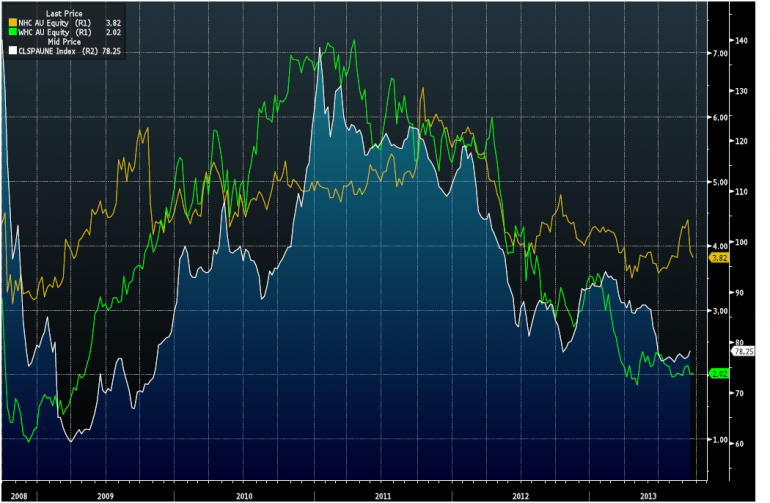Markets: Dark days for thermal coal
Without doubt the thermal coal industry is facing dramatic structural challenges. The market is in oversupply and domestic producers are taking measures to outprice rivals in a bid to move the black rock. Adding to the woes of coal miners is shale gas, which is a much cheaper energy alternative.
To move reserves, Aussie coal miners are outpricing the market where they can. Consequently the profitability of coal mining is becoming squeezed for other producers, especially those with mines in the coal-rich country of Mongolia.
During 2011, the coal market was booming and companies aggressively expanded where they could. Now with lower prices, smaller, more leveraged companies could be squeezed when it comes to refinancing. Coal companies in need of financing won’t make a great investment choice for banks if the outlook for the commodity remains as miserable as it is now. Spot thermal coal prices have slumped to about $75 a tonne, down from $200 in 2008.
Domestic coal miners are not alone in experiencing the drop in demand for coal. Ratings agency Standard & Poor’s put Hong Kong-listed Yanzhou Coal Mining on watch for a ratings downgrade, noting the difficulties facing the industry. Yanzhou with a market cap close to $HKD40 billion has a foot in both coking and thermal coal camps, giving it more chance to navigate the struggling thermal coal market.
Compared with some other coal producers, Australian coal miners are in a more favourable position thanks to the close proximity to Asia. It has been estimated that it costs $US15 per tonne to ship to China’s east coast. In comparison, Mongolian miners pay around four times this amount to truck their coal to its destination.
Shale gas is gaining popularity as an energy source. In addition to this, it is becoming more efficient to produce, keeping costs competitively low and making it more attractive as an energy alternative.
Coal makes up over 80 per cent of China’s electricity generation. Once other energy sources gain more market share, it will mean a new round of structural change for an already battling industry.
For major domestic coal miners, New Hope Corp has been able to manage a falling coal price better than rival Whitehaven Coal, largely due its exposure to other investments. Declining interest in coal saw New Hope’s coal sales decline by four per cent in the last financial year, while the cost of sales fell 10.1 percent.
The graph below tells the story – the spot coal price per tonne (white line) leads price declines in New Hope Corp (yellow line) and Whitehaven Coal (green line).

Source: Bloomberg
An oversupplied market and an increasing dominance of alternative energy sources doesn’t paint the brightest outlook for domestic coal producers.













